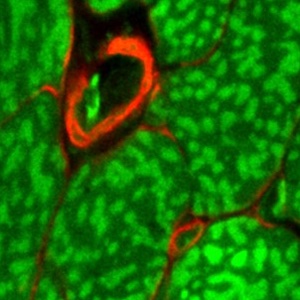Management of autofluorescence in formaldehyde-fixed myocardium: choosing the right treatment

Submitted: 21 June 2023
Accepted: 28 August 2023
Published: 2 October 2023
Accepted: 28 August 2023
Abstract Views: 784
PDF: 398
Supplementary: 53
HTML: 10
Supplementary: 53
HTML: 10
Publisher's note
All claims expressed in this article are solely those of the authors and do not necessarily represent those of their affiliated organizations, or those of the publisher, the editors and the reviewers. Any product that may be evaluated in this article or claim that may be made by its manufacturer is not guaranteed or endorsed by the publisher.
All claims expressed in this article are solely those of the authors and do not necessarily represent those of their affiliated organizations, or those of the publisher, the editors and the reviewers. Any product that may be evaluated in this article or claim that may be made by its manufacturer is not guaranteed or endorsed by the publisher.
Similar Articles
- T. Kocsis, J. Baán, G. Müller, L. Mendler, L. Dux, A. Keller-Pintér, Skeletal muscle cellularity and glycogen distribution in the hypermuscular Compact mice , European Journal of Histochemistry: Vol. 58 No. 3 (2014)
- T. Karaca, Y. Hulya Uz, R. Karabacak, I. Karaboga, S. Demirtas, A. Cagatay Cicek, Effects of hyperthyroidism on expression of vascular endothelial growth factor (VEGF) and apoptosis in fetal adrenal glands , European Journal of Histochemistry: Vol. 59 No. 4 (2015)
- Pingping Li, Jimin Zheng, Yun Bai, Dingxin Wang, Zijin Cui, Yueqin Li, Jian Zhang, Yuzhen Wang, Characterization of kynurenine pathway in patients with diarrhea-predominant irritable bowel syndrome , European Journal of Histochemistry: Vol. 64 No. s2 (2020): Special Collection on Stem Cells and Regenerative Medicine
- Xiaoyan Chu, Jun Lou, Yun Yi, Linlin Zhong, Ouping Huang, Knockdown of ARHGAP30 inhibits ovarian cancer cell proliferation, migration, and invasiveness by suppressing the PI3K/AKT/mTOR signaling pathway , European Journal of Histochemistry: Vol. 67 No. 2 (2023)
- Yao Le, Zhijun Wang, Qian Zhang, Ling Miao, Xiaohong Wang, Guorong Han, Study on the mechanism of Shenling Baizhu powder on the pathogenesis of pregnancy complicated with non-alcoholic fatty liver, based on PI3K/AKT/mTOR signal pathway , European Journal of Histochemistry: Vol. 68 No. 3 (2024)
- SA Abd-El-Aleem, C Morgan, MVJ Ferguson, CN McCollum, GW Ireland, Spatial distribution of mast cells in chronic venous leg ulcers , European Journal of Histochemistry: Vol. 49 No. 3 (2005)
- F. Dorko, D. Kluchová, A. Boleková, K. Lovasová, T. Špakovská, T. Borošová, Influence of surgical and chemical orchidectomy on weight and distribution of AChE-nerve fibres in thymuses of adult rats , European Journal of Histochemistry: Vol. 55 No. 3 (2011)
- M. Salemi, A. Galia, F. Fraggetta, C. La Corte, P. Pepe, S. La Vignera, G. Improta, P. Bosco, A.E. Calogero, Poly (ADP-ribose) polymerase 1 protein expression in normal and neoplastic prostatic tissue , European Journal of Histochemistry: Vol. 57 No. 2 (2013)
- Martin Boháč, Ľuboš Danišovič, Ján Koller, Jana Dragúňová, Ivan Varga, What happens to an acellular dermal matrix after implantation in the human body? A histological and electron microscopic study , European Journal of Histochemistry: Vol. 62 No. 1 (2018)
- Brigitta Bonaldo, Antonino Casile, Martina Bettarelli, Stefano Gotti, GianCarlo Panzica, Marilena Marraudino, Effects of chronic exposure to bisphenol A in adult female mice on social behavior, vasopressin system, and estrogen membrane receptor (GPER1) , European Journal of Histochemistry: Vol. 65 No. s1 (2021): Special Collection on Advances in Neuromorphology in Health and Disease
<< < 16 17 18 19 20 21 22 23 24 25 > >>
You may also start an advanced similarity search for this article.

 https://doi.org/10.4081/ejh.2023.3812
https://doi.org/10.4081/ejh.2023.3812











